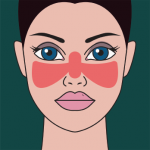Dr. Salmon provides an example of a lupus patient who has erosive arthritis and does not have nephritis. Such a patient will get treated like a patient with rheumatoid arthritis, because her joints are the main problem. Dr. Salmon says, “TNF inhibitors are actually effective in lupus patients with erosive arthritis.”
She argues that rheumatologists have been quite limited in their ability to target disease mechanisms in lupus (other than through broad immunosuppression), although some important drugs that affect key lupus-related pathways are in phase 3 trials, such as interferon-alpha receptor antibodies and JAK-STAT inhibitors. She notes, “At this point we treat the patient’s disease manifestations as best as we can.”
Indeed, physicians sometimes use drugs off label to take advantage of the mechanistic overlap of diseases on the rheumatic spectrum. “Hydroxychloroquine is a drug used for lupus patients, but we are now using it for other autoimmune conditions, such as for antiphospholipid syndrome and in pregnant anti-Ro-positive patients to prevent neonatal lupus and congenital heart block,” Dr. Salmon says. “Because these diseases blend into each other clinically, and perhaps pathogenetically, these therapies are used more generally based on plausible mechanism.”
Criteria Under Review
New criteria for lupus that have been supported by the ACR and EULAR are currently under review. These new criteria aim to provide greater sensitivity and specificity for the disease. Under the new criteria, a positive ANA is a necessary condition for a SLE diagnosis. For Dr. Kaposi, a rash was a necessary criterion.
Dr. Salmon says, “The ACR criteria for lupus are good for trials, but we don’t treat patients based on the criteria. There are patients with three, not four, criteria for lupus who rheumatologists believe have the disease and treat them accordingly.” She notes the effort to revise is important for the goal of appropriately identifying groups for lupus trials. “We have to keep revisiting how we lump and split, how we classify patients, because we want to find good therapies. And if we enroll patients that are too variable in their mechanism of disease in a trial, then the overall trial will fail, even if the drug would be amazing for an important subset of patients.”
In one sense the effort can be viewed as a continuation of the work done over 140 years ago by Dr. Kaposi. His work set the stage for further classification, understanding and, ultimately, treatment of the disease, a process that is still ongoing.


